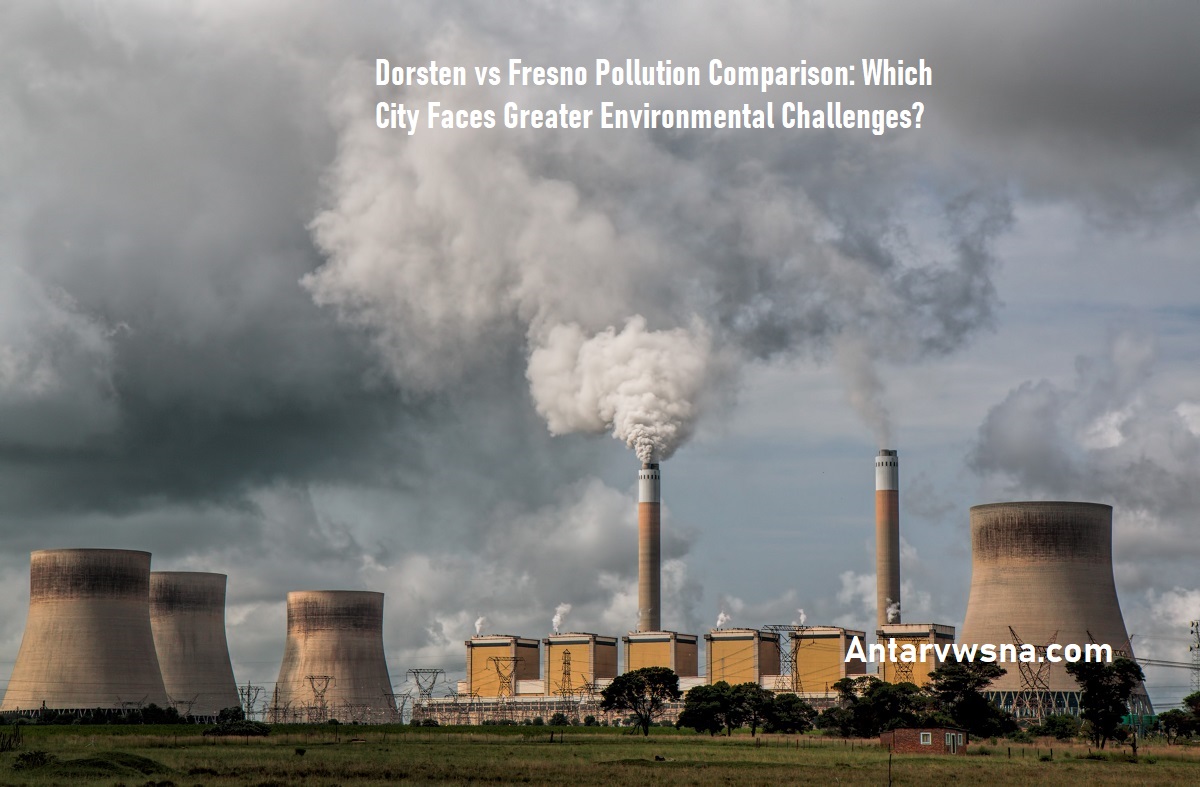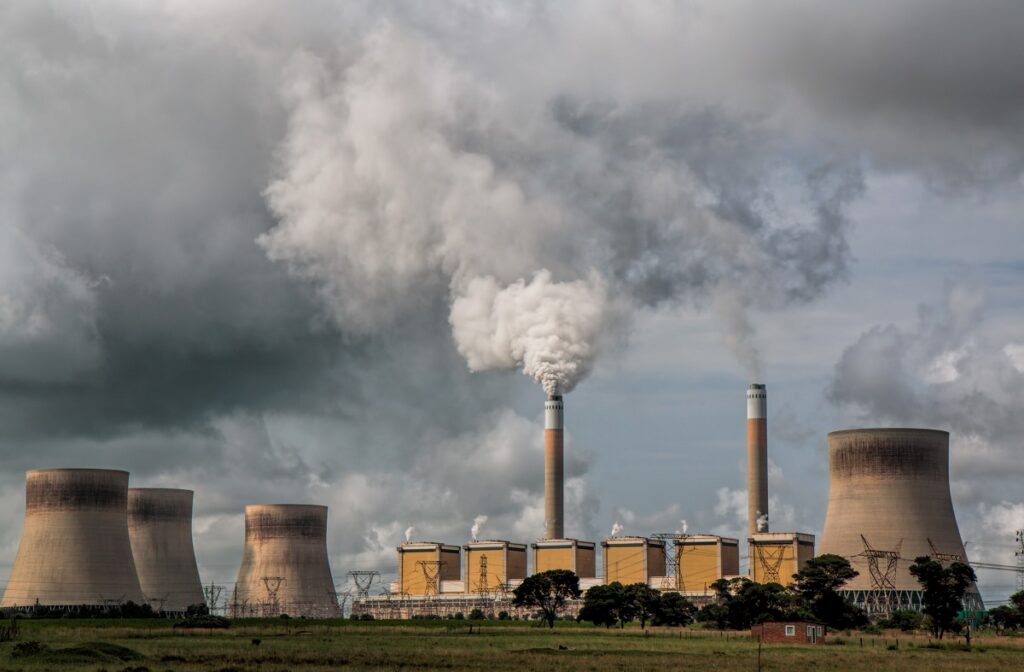Introduction
In today’s world, pollution is a pressing concern that affects the quality of life in cities across the globe. Air quality, water contamination, and waste management all play significant roles in determining a city’s livability. In this blog, we will explore a fascinating comparison between two cities from different parts of the world: Dorsten, a town in Germany, and Fresno, a city in California, USA. The “Dorsten vs Fresno Pollution Comparison” will dive into the environmental challenges each city faces, their respective pollution levels, and the efforts being made to combat these issues. By the end, you’ll have a better understanding of how these two cities measure up when it comes to pollution and environmental responsibility.
Air Pollution in Dorsten vs Fresno
Dorsten’s Air Quality
Dorsten is a relatively small town with a population of around 75,000 people. Located in the state of North Rhine-Westphalia, it has an industrial past, though today it has shifted towards a more suburban character. The air quality in Dorsten is generally considered good compared to larger, industrialized cities in Germany, but like most places, it is not immune to pollution.
The main sources of air pollution in Dorsten are vehicle emissions, agriculture, and nearby industrial activity. North Rhine-Westphalia is home to many industrial plants, which contribute to air pollution in the region. However, Dorsten benefits from national regulations that limit emissions, and initiatives to reduce carbon footprints have shown significant progress.
Fresno’s Air Quality
Fresno, on the other hand, has a much larger population of over 500,000 and sits in California’s San Joaquin Valley, an area infamous for its poor air quality. The valley’s geography, combined with agricultural activities and vehicle emissions, makes Fresno one of the cities with the worst air quality in the United States. During certain times of the year, such as the summer months, ozone and particulate matter (PM2.5) levels rise significantly, often exceeding federal health standards.
Fresno’s air pollution is a result of several factors: emissions from cars and trucks, wildfires, and dust from agricultural operations. The city is frequently under “spare the air” alerts, which warn residents of high pollution days where outdoor activities should be limited.
Comparison
When comparing Dorsten vs Fresno pollution in terms of air quality, it’s clear that Fresno faces a much more severe problem. While Dorsten experiences occasional pollution spikes from nearby industrial regions, Fresno’s air quality is persistently poor due to the combination of environmental factors and the high volume of vehicular traffic and agricultural emissions. The health risks for residents in Fresno are much higher, particularly for those with respiratory issues.
Water Pollution in Dorsten vs Fresno
Water Quality in Dorsten
Dorsten has access to high-quality drinking water, largely due to Germany’s strict water management policies. The town relies on a combination of groundwater and surface water sources, which are rigorously monitored for pollutants. Industrial activity in the region, particularly from the Ruhr area, has had a historic impact on water quality, but in recent years, efforts to clean up local water sources have been successful.
Local authorities in Dorsten are proactive in preventing water pollution, implementing measures to protect the water supply from agricultural runoff, sewage, and industrial waste. Furthermore, Germany’s advanced sewage treatment plants ensure that wastewater is treated to high standards before being released back into rivers and lakes.
Water Quality in Fresno
Fresno, unfortunately, does not enjoy the same level of water quality. The city’s water supply primarily comes from groundwater, which has been heavily impacted by agricultural activities in the San Joaquin Valley. Pesticides, fertilizers, and nitrates often contaminate local water supplies, making Fresno one of the most water-polluted regions in California.
Additionally, Fresno’s aging water infrastructure has led to problems such as leaky pipes and poor water distribution, which can introduce further contaminants into the drinking water. Residents in certain parts of the city have had to rely on bottled water due to the unsafe levels of pollutants detected in tap water.
Comparison
In the “Dorsten vs Fresno Pollution Comparison” of water quality, Dorsten comes out ahead. Its well-regulated water sources and modern treatment facilities ensure that residents have access to clean, safe drinking water. Fresno, on the other hand, struggles with significant contamination issues, primarily due to agricultural runoff and outdated infrastructure. This puts Fresno residents at a greater risk of exposure to harmful chemicals in their water supply.
Waste Management in Dorsten vs Fresno
Waste Management in Dorsten
Germany is renowned for its efficient waste management systems, and Dorsten is no exception. The town has a well-organized recycling program, where residents are required to separate their waste into various categories, including paper, plastic, glass, and organic waste. This system has helped Germany achieve one of the highest recycling rates in the world, reducing the amount of waste that ends up in landfills.
Dorsten also has several waste treatment facilities that use modern technologies to convert waste into energy, further reducing the town’s environmental impact. Composting is encouraged, and residents are educated about sustainable waste disposal practices.
Waste Management in Fresno
Fresno’s waste management system is less efficient compared to Dorsten’s. While the city does offer curbside recycling, participation rates are lower, and the overall waste management infrastructure is not as advanced. Landfills in the Fresno area are reaching capacity, and the city has struggled with illegal dumping in certain areas.
Additionally, Fresno faces challenges with organic waste management. Despite California’s push towards composting and reducing food waste, Fresno has been slow to adopt these practices at the scale necessary to make a significant environmental impact.
Comparison
In this aspect of the Dorsten vs Fresno pollution comparison, Dorsten again stands out as the leader. Its advanced waste management and recycling programs have helped reduce the town’s overall environmental footprint, while Fresno continues to grapple with waste disposal issues. Fresno’s over-reliance on landfills and slower adoption of composting and recycling initiatives puts it at a disadvantage.

Environmental Policies and Efforts
Dorsten’s Environmental Initiatives
Germany is a global leader in environmental policy, and Dorsten has benefited from national and regional efforts to reduce pollution. The country’s commitment to renewable energy, the promotion of electric vehicles, and stringent emission controls have all contributed to cleaner air and water. Dorsten’s local government is proactive in promoting green initiatives, such as expanding public transportation, planting more trees, and encouraging the use of bicycles as an alternative to cars.
Germany’s focus on sustainable development has also influenced how cities like Dorsten handle urban planning. Green spaces, energy-efficient buildings, and sustainable waste management systems are all part of the broader environmental strategy.
Fresno’s Environmental Initiatives
Fresno has made some strides in addressing its pollution issues, but the city’s efforts have been slower and less comprehensive than Dorsten’s. California has strict environmental laws, and Fresno has been working to reduce emissions from vehicles and industrial sources. The city has also promoted the use of solar energy, and many homes and businesses have adopted solar panels to reduce reliance on fossil fuels.
However, Fresno’s efforts have been hampered by the city’s economic challenges, population growth, and agricultural demands. While there are programs in place to improve air and water quality, they have not been as effective as in other regions of California.
Comparison
In the realm of environmental policy, the “Dorsten vs Fresno Pollution Comparison” clearly shows Dorsten’s advantage. Germany’s strong national environmental policies, coupled with Dorsten’s local efforts, have positioned the town as a leader in sustainability. Fresno, while making progress, faces significant challenges due to its unique geographic and economic circumstances.
Public Health Impacts of Pollution
Health Effects in Dorsten
The relatively low levels of pollution in Dorsten mean that the town’s residents enjoy good overall health. While there are occasional spikes in air pollution due to nearby industrial activity, these are infrequent and quickly addressed. Germany’s stringent health and safety standards ensure that any environmental risks are minimized.
Respiratory conditions, such as asthma and bronchitis, are not common in Dorsten, and waterborne diseases are virtually non-existent due to the high quality of the town’s drinking water. The availability of green spaces and clean air also contributes to better mental and physical well-being.
Health Effects in Fresno
In contrast, Fresno’s high pollution levels have serious public health consequences. The city has some of the highest rates of asthma and other respiratory conditions in the United States, particularly among children and the elderly. During periods of high pollution, hospitals see a spike in emergency room visits due to respiratory distress.
The contaminated water supply also poses health risks. Long-term exposure to nitrates and pesticides in drinking water can lead to serious health problems, including cancer, reproductive issues, and developmental delays in children.
Comparison
When comparing the health impacts in the “Dorsten vs Fresno Pollution Comparison,” it’s clear that Fresno faces far more severe health consequences due to its pollution levels. While Dorsten residents benefit from a cleaner environment, Fresno’s population struggles with the effects of poor air and water quality.
Conclusion
The “Dorsten vs Fresno Pollution Comparison” highlights the stark differences between these two cities when it comes to environmental challenges. Dorsten, with its strong environmental policies and relatively low levels of pollution, serves as an example of how proactive measures can improve the quality of life for residents. Fresno, on the other hand, faces significant hurdles in addressing its pollution problems, particularly in terms of air and water quality.
As the world continues to grapple with the effects of pollution and climate change, both cities offer valuable lessons. Dorsten shows the importance of stringent environmental regulations and sustainable urban planning, while Fresno highlights the need for more aggressive action to tackle the unique challenges faced by cities in pollution-prone regions. By learning from each other, both cities can work towards a cleaner, healthier future for their residents.
FAQs for Dorsten vs Fresno Pollution Comparison
1. What are the main sources of pollution in Dorsten?
The main sources of pollution in Dorsten include vehicle emissions, nearby industrial activities, and agricultural runoff. However, Germany’s strict environmental regulations help manage and minimize pollution levels in the region.
2. Why does Fresno have such poor air quality?
Fresno suffers from poor air quality due to its geographical location in the San Joaquin Valley, agricultural emissions, high vehicle traffic, and periodic wildfires. The valley’s enclosed geography traps pollutants, making the air quality worse, especially in the summer.
3. How does water pollution differ between Dorsten and Fresno?
Dorsten has high-quality drinking water due to advanced wastewater treatment and strict regulations. In contrast, Fresno struggles with water contamination, mainly from agricultural runoff, including pesticides and nitrates, which affect groundwater supplies.
4. What health problems are caused by pollution in Fresno?
Fresno’s pollution contributes to high rates of asthma, respiratory issues, and other health conditions. Water contamination in the area also poses long-term health risks, including cancer and developmental issues in children.
5. How does waste management compare between Dorsten and Fresno?
Dorsten has a highly efficient recycling and waste management system, with strict separation of waste and modern treatment facilities. Fresno, on the other hand, struggles with low recycling participation rates and over-reliance on landfills, which has led to waste disposal challenges.






Howdy just wanted to give you a brief heads up and let you know a few of the images aren’t loading properly.
I’m not sure why but I think its a linking issue. I’ve tried it in two different
internet browsers and both show the same results.
Thanks for the heads up! It sounds frustrating when images won’t load properly. If it’s a linking issue, it might be worth checking if the URLs are correct or if there’s a problem with the hosting site. If you need help troubleshooting, let me know!